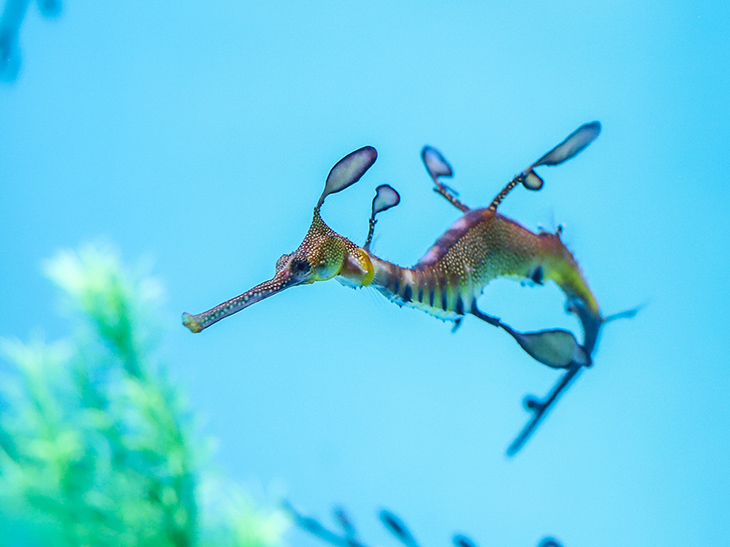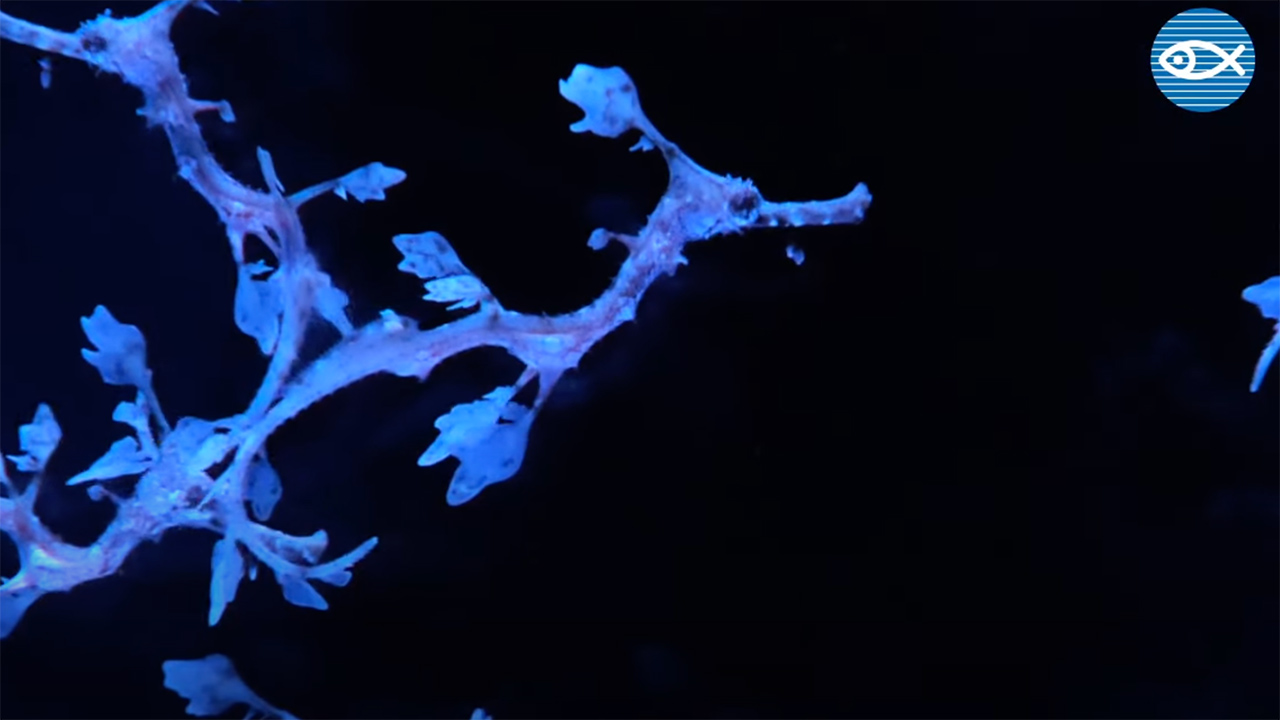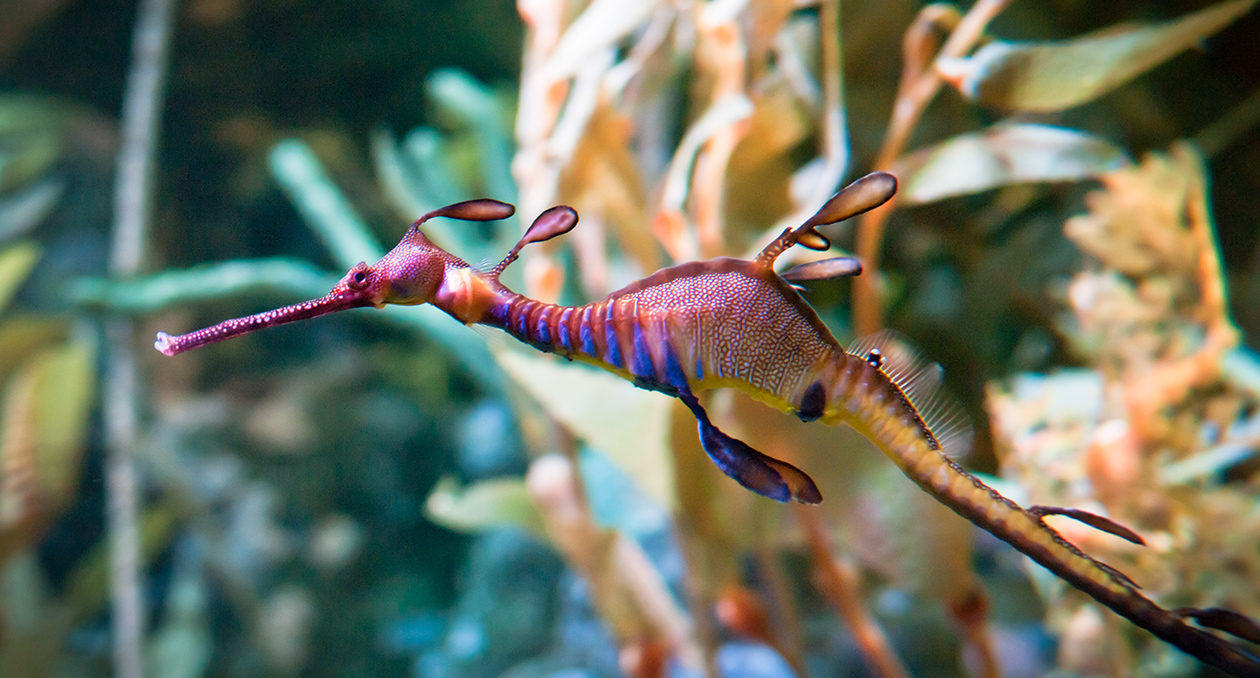It looks like seaweed, it moves like seaweed, but it’s a fish! Weedy seadragons’ leaf-like appendages, called leaflets, adorn their bodies and act as camouflage to help them hide among seagrass in sandy areas.
Animal Facts
Size
Up to 18 inches long
Diet
Primarily mysid shrimp, which are small enough to be sucked in with their long tube snout
Lifespan
Typically seven to nine years in the care of humans
Range
Southern coast of Australia
Conservation Status
Least concern
Threats to Survival
- Climate change
- Habitat loss
- Pollution
Special Considerations for Protecting Endemic Species
Though the weedy seadragon is classified as a species of “least concern” by the International Union for Conservation of Nature, it is difficult to know their actual numbers in the wild. Being found in only one place in the world, the Southern Australian Temperate Reef, any changes to their habitat due to climate change could pose a big challenge for them.


Baby Weedy Seadragons at the Aquarium
After 15 years of attempting to breed our seadragons, the New England Aquarium had a successful weedy seadragon hatching! Environmentally responsible aquaculture programs like this allow institutions to display animals for educational purposes without removing any from the wild.


